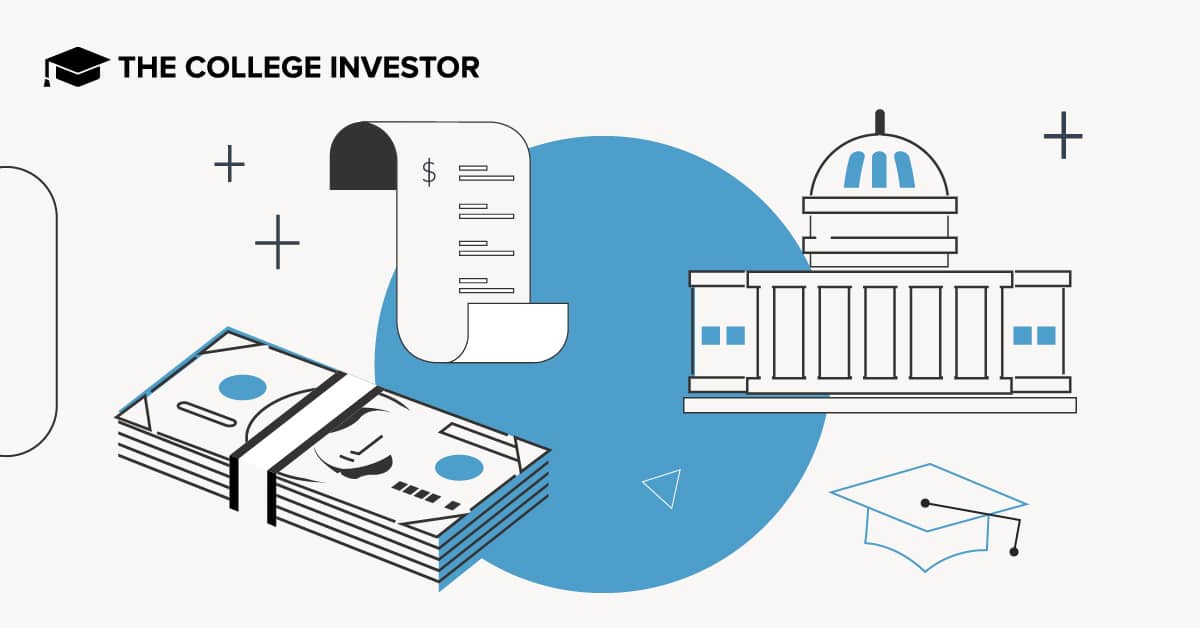Does The Government Profit Off Of Student Loans?


Does the government actually make money from federal student loans?
The short answer: sometimes, but not consistently and it depends heavily on how you do the accounting. During the pandemic, eliminating interest payments on student loans made the program swing from a profit to a loss even in the most optimistic of projections.
In this article, we break down how the federal government calculates profits (or losses) on student loans, why accounting choices matter, real numbers from federal budgets, and what that means for policy and taxpayers.
When a loan program generates revenue over time, you can evaluate the total income of the program by calculating the current value of future income. Income includes not just future interest payments, but also future payments of principal.
A simplistic approach is to just sum the future payment amounts.
Total Student Loan Revenue = Sum Of All Future Payments
But, future dollars are worth less than current dollars, in part because of inflation.
A more sophisticated approach calculates the present value of the future payments by discounting it.
For example, if the annual inflation rate is 5%, a dollar one year from now has the same buying power as 95 cents today and a dollar two years from now is worth slightly less than 91 cents today. The cumulative impact is calculated based on a product of each year’s discounted value.
The present value will depend on the choice of discount rate. Common choices include the inflation rate and a risk-free rate of return. The yield on U.S. Treasuries of a comparable maturity is often used as risk-free rate of return since investments in U.S. Treasuries are low risk.
In effect, the present value is the amount you would need to invest now in a risk-free investment to yield the future stream of loan payments.
Present Value Of Student Loan Revenue = Today’s Value Of All Future Payments Discounted Using Inflation And Rate Of Return
But, there are often philosophical differences in the choice of a risk-free rate of return.
The Federal Credit Reform Act of 1990 specifies the methodology that must be used in the federal budget.
Some people, however, argue that the discount rate is too low. They advocate for the use of Fair Value Accounting (FVA), which uses a higher discount rate because it considers market risk. But, government programs are not subject to the same risks as commercial programs. Curiously, proponents of Fair Value Accounting are often selective in the choice of programs for which they feel FVA should be used, so the
debate seems more political than policy-driven.
A higher discount rate reduces the value of the future income by more than a lower discount rate. After you subtract the costs from the present value of the future income, you can swing it from a profit to a loss or vice versa, depending on the choice of discount rate.
The education appendix to the federal budget (PDF) includes an analysis of the student loan program costs, referred to as subsidies. It includes actual figures for the previous year and estimates for the current year and the next year.
The subsidy costs are broken down by type of loan, including new subsidized Federal Direct Stafford Loans, unsubsidized Federal Direct Stafford Loans for undergraduate and graduate students, new Federal Direct Parent PLUS Loans and Federal Direct Grad PLUS Loans, as well as Federal Direct Consolidation Loans. There is also an overall loan subsidy figure, plus an overhead figure for federal administrative costs.
This table shows the actual subsidy costs from the federal budget for the last several federal fiscal years. Positive numbers indicate a net cost while negative numbers indicate a net profit. So, if you’re wondering where the government is potentially profiting from student loans, look for loan programs that have a NEGATIVE number (such as Parent PLUS Loans).
The program costs are expressed as percentages. For example, a cost of 2% means it costs the federal government $2 over the life of the loan on a net present value basis for every $100 borrowed.
The Federal Direct Loan program swung from a profit during the Obama administration to a loss during the Trump administration. The loss increased significantly in FY2020 due to the payment pause and interest waiver during the pandemic.
Subsidized Stafford loans always have a net cost because of the cost of the subsidized interest benefit. Parent PLUS loans are usually profitable due to higher interest rates and lower default rates, compensating for losses in the other loan programs.
This table below shows the actual costs from the most recent full year (FY2024), and we compare it to pre-pandemic FY2018 an FY2017 – which were one of the more “normal” years of the past decade.
To summarize the table a bit, this means that in Fiscal Year 2024, the Federal Student Loan programs cost the government $19.64 for every $100 borrowed. In more “normal” years like 2017, the Federal student loan program cost the government $0.70 for every $100 borrowed.
The subsidy costs are based, in part, on interest and fees, the length of the average loan maturity, default rates, defaults net of recoveries and the recovery rate.
The average loan maturity is 17 years, a lifetime default rate of 19.13%, and a recovery rate of 104.74%.
The net recovery rate for defaulted loans is about 80 to 85 cents on the dollar after subtracting collection costs. The recovery rate is much higher than for commercial loans in part because the federal government has very strong powers to compel repayment, including administrative wage garnishment, offset of income tax refunds and offset of Social Security benefit payments.
The program costs must be periodically re-estimated, in part because of changes in interest rates and other assumptions. The re-estimates are usually higher than the original subsidy rates. So, even if the loan program initially looks like it yields a profit, it may ultimately yield a net cost after the program costs are re-estimated.
The focus of federal student loan programs is on enabling students to pay for a college education and not to provide profit to the federal government.
Borrowers often wonder how the U.S. Department of Education spends the interest that borrowers pay on federal student loans in the Direct Loan program. Most of the money goes to cover the costs of making, servicing and collecting the student loans, as well as defaults, discharges and loan forgiveness.
If there were a profit on federal student loans, the net revenue would be used to defray the cost of other federal student aid programs, such as the Federal Pell Grant and Federal Work-Study programs. When federal legislation involves a reduction in the cost of federal student loan programs, Congress often uses the savings to justify increased spending in other parts of the U.S. Department of Education budget.
Does the federal government make money from student loans?
It depends on the accounting method used. Under federal credit reform accounting, student loans often appear to generate a small surplus because the government borrows at low rates and charges borrowers higher rates. However, when using “fair value” accounting (adjusting for market risk) loans usually show a loss, not a profit.
Why do estimates of loan profits change from year to year?
Estimates change as real-world data replaces projections. Each year, the Office of Management and Budget (OMB) re-estimates subsidy costs based on updated repayment rates, defaults, and economic conditions. During the Covid-19 payment pause, for example, what had looked like a net gain turned into large losses because interest was waived.
Where does the interest on federal student loans go?
Interest payments go to the U.S. Treasury, not a private company. That money helps offset the government’s borrowing costs, loan servicing expenses, and defaults. It’s not a direct “profit” in the corporate sense – it’s simply a way to recover program costs.
Do any student loan programs make money?
Parent PLUS and Grad PLUS loans have historically been closer to break-even or slightly positive, though that varies by year.
Does loan forgiveness mean taxpayers lose money?
Forgiveness is recorded as a cost to the government because it reduces expected repayment. The actual fiscal impact depends on how much debt is canceled, the timing, and how it affects long-term repayment behavior.
Is making a “profit” the goal of the student loan program?
No. The primary purpose of federal student lending is to expand access to higher education. The government aims to keep the program budget-neutral over time, not to generate revenue.

The end of the year is one of the most powerful moments to improve your financial life. A few intentional...

Leaving the military often means adjusting to a new routine, a new career path, and new financial responsibilities. Even with...

Let’s face it, when the press begins crying recession, most people go into freeze mode. Fear rules the day. But...